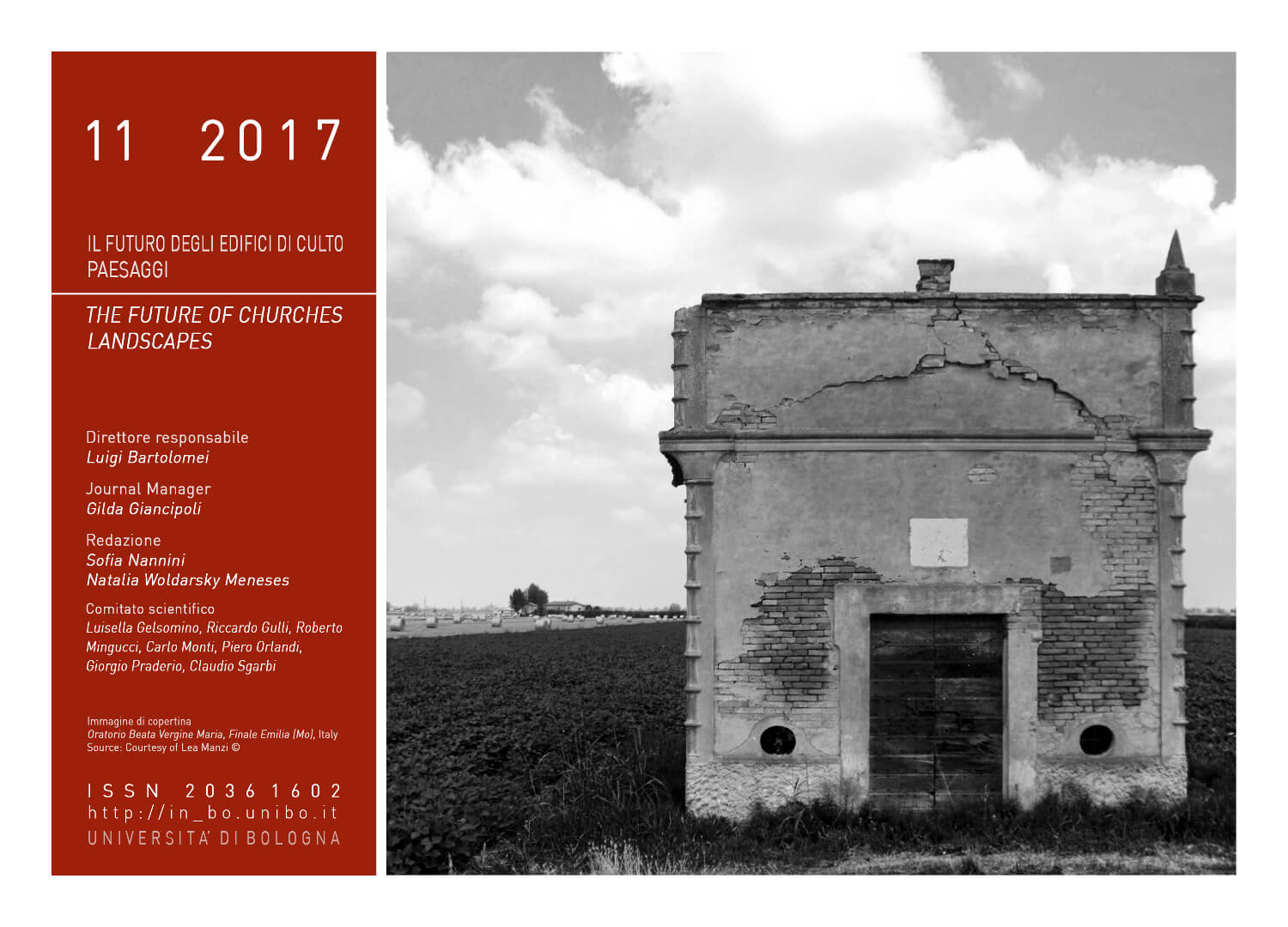The former convent of Santa Domenica in Nicosia (EN): recovery of liturgical space
DOI:
https://doi.org/10.6092/issn.2036-1602/6552Keywords:
Compatibility, Modularity, Reversibility, Noninvasiveness, ReuseAbstract
Making possible that an architectural object that already has a strong residual identity – especially talking about a place of worship – could work again is never merely a technical choice of reusing a particular space. Rather, it deals with reconfirming its identity through the reinterpretation of the space in question, although changing the functional denotation. In this sense, it needs, on the one hand, to identify a new function that may insert again the object in the current everyday context, on the other, to safeguard what this place has previously been, materially and not, through sensible choices aiming at either adding missing pieces or adding new ones. For this purpose, it is of fundamental importance to analyze the space in question through a multidisciplinary approach that aims at gathering all the information regarding its history, its physical, formal, compositional and material characteristics and even its state of deterioration. Through the collection of all these informations and considerations, strongly linked to the cultural oriented sensitivity of the tecnician, ends up in shaping the rule on how to approach to that particular “re-working” project. The chosen case of study concerns the former convent of Santa Domenica in Nicosia (Enna), whose story starts in the 14th century and ends in 1973 and is the result of clunky and barbaric interventions of the city administration of the time. What remains of it is a small ruin placed in the heart of the city of Sicilian hinterland, strongly stratified under the historical point of view. Convent’s ruins, abandoned since that moment, show off old colonnades, massive headstone walls, secret tunnels and a graceful church structure, whose unroofed nave, although is still partially made up of majolica, culminate in a coffered and golden plaster adorned apse. The ruins of a majestic Baroque portal lie, scattered, within this sacred perimeter. It is, then, worthy giving a new function to this place and it is also compulsory respecting its identity. It is in such a way that this project, ‘unsettled’ in time, based on the principle of reversibility that does not invade but gives value to what has existed, has born.References
Giuseppe Beritelli La Via, Notizie Storiche di Nicosia, Stamperia di G. Pedone, Palermo, 1852
Cesare Brandi, Teoria del Restauro, Giulio Einaudi Editore, 2000
Giovanni Carbonara, Avvicinamento al restauro, Liguori Editore, Napoli, 1997, pp. 371-384 e 521-534
G. La Motta, Nicosia. Vol.12 Paesi di Sicilia, Editoriali Ibis, Palermo, 1963
Salvatore Lo Pinzino, Sperlinga e Nicosia. La memoria ritrovata, vol.1, Editrice il Lunario, Nicosia, 2004
Bartolomeo Provenzale, Nicosia Sacra e Profana, vol. 2, Manoscritto nella Biblioteca Comunale di Nicosia (En), Nicosia, 1695
Amedeo Bellini, “Restauro, conservazione e reversibilità in architettura”, in Atti del XIX Convegno Internazionale Scienza e Beni Culturali - Bressanone 1–4 luglio 2003, La reversibilità nel restauro, Edizioni Arcadia Ricerche, Venezia, 2003, pp. 1-5
Downloads
Published
How to Cite
Issue
Section
License
Copyright (c) 2017 Egidio Di Maggio
Copyrights and publishing rights of all the texts on this journal belong to the respective authors without restrictions.
This journal is licensed under a Creative Commons Attribution-NonCommercial 4.0 International License (full legal code).
See also our Open Access Policy.
Metadata
All the metadata of the published material is released in the public domain and may be used by anyone free of charge. This includes references.
Metadata — including references — may be re-used in any medium without prior permission for both not-for-profit and for-profit purposes. We kindly ask users to provide a link to the original metadata record.







